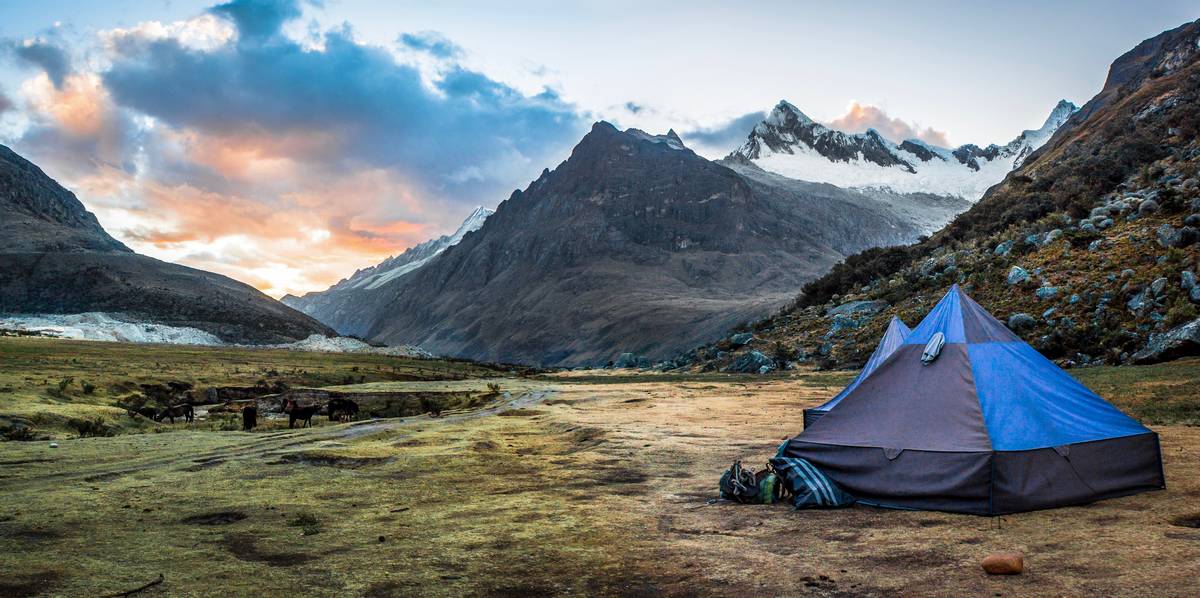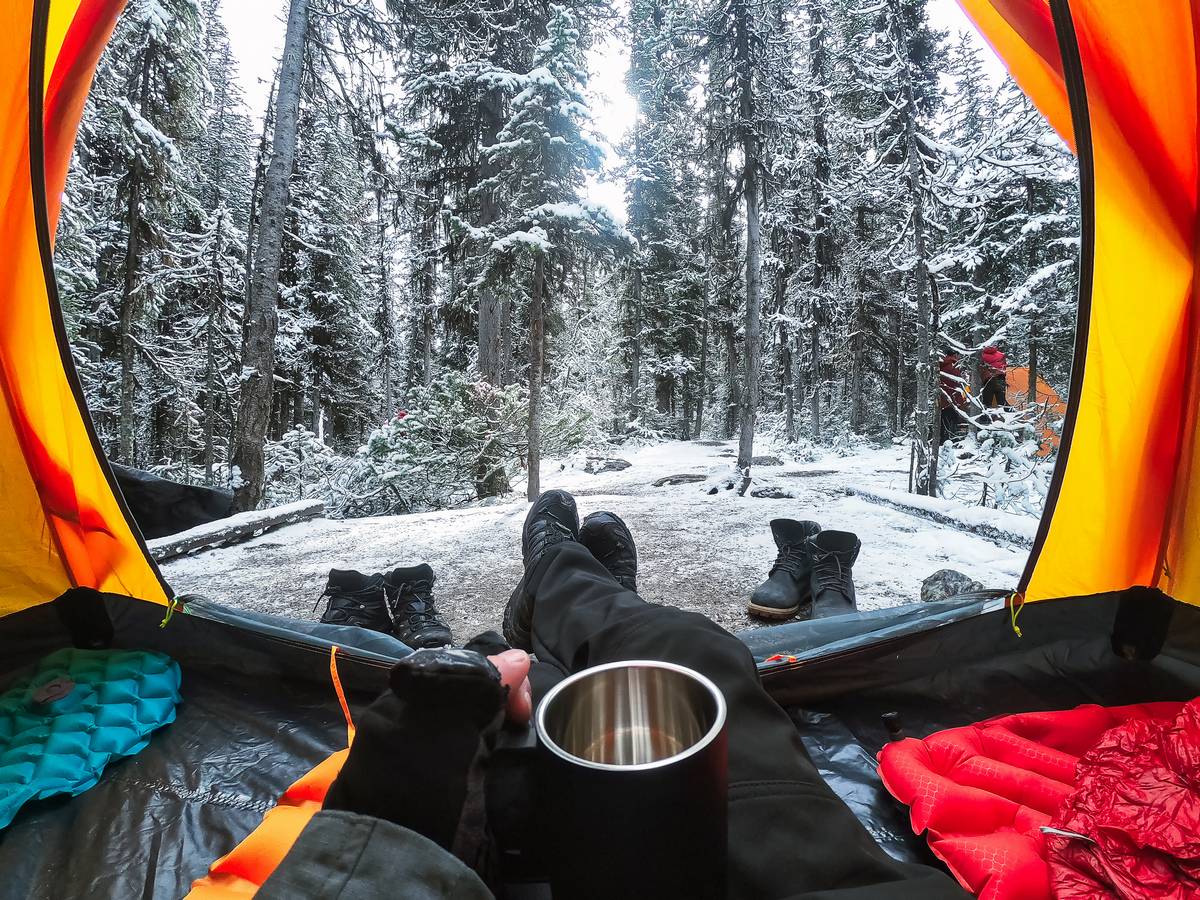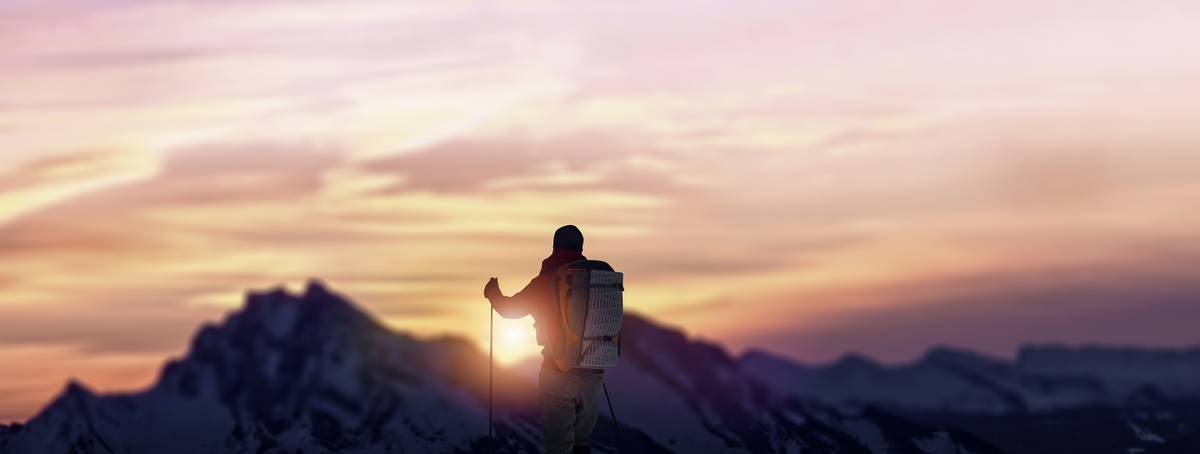Do you enjoy adventures in the great outdoors, love watching sunsets in the mountains, and appreciate to reconnect with nature? Good news, summer is coming! In this article, we will not talk about the latest garden furniture items nor barbecues, oh boy no. What if, this time summer rhymes with simplicity. Why not, instead of a barbecue, you were to invest in your first rucksack? We can guarantee, you will not be disappointed! To convince you Glisshop explains thoroughly how to prepare your first backpacking trip. What backpack to choose? What equipment to carry? How to pick your route? We tell you everything, so let’s go!

1/ Preparing your route
Choosing your route
When venturing in the mountains or in wilderness, it is critical to not overestimate your level. This is why, to put all the chances on your side to enjoy your first trek, you need to plan your route in advance, to identify the potential difficult sections. To be sure to gather all the information you need for your trek, check with local tourist information centres, or on dedicated websites. The GR (Grandes Randonnées trails for long-distance trails) in France offer various routes for various levels. To help you in your choice, discover our dedicated article, with 4 GR to discover this summer!
Locating supply stops
This preparation will also be the occasion to locate potential supply stops along your journey (refuges, shelters, villages …). This will give you a better understanding of the route and will avoid bad surprises. You can go for totally self-sufficient treks or stop each day in a B&B or refuge. You will need to choose a suitable hiking backpack according to your decision.

2/ Choosing the right backpack!
On a trek, and particularly a mountain trek, the days can be long and the elevation gains substantial. Therefore, it is of prime importance to equip yourself accordingly with a quality rucksack, perfectly suited to your body type. Trust us, this may seem like a detail, yet when your shoulders and hips are burning, it will all make sense. However, as the market is flooded by clever (or not) products, a novice preparing his or her first trek can quickly feel lost. Here are some elements to take into account for your first investment.
Indeed, if even before loading your trekking backpack, it already weighs 22 pounds, you limit the chances of enjoying your journey.
30 to 50 litre rucksacks:
- Weight
Indeed, if even before loading your trekking backpack, it already weighs 22 pounds, you limit the chances of enjoying your journey.
- Capacity
30 to 50 litre rucksacks:
For 2 to 3 day treks with a night spent in a refuge or B&B, no need to carry a tent nor food, therefore no cooking equipment either. A moderate capacity backpack will be enough to carry all the hiking equipment you require.
50 litre backpacks and over:
However, if you opt to camp during your trek, your backpack will naturally need a bigger capacity. 50 litres will be the minimum to carry all your gear. Note that some trekking rucksacks reach a capacity of 90 litres, required if your route compels you to be totally self-sufficient or if you are travelling with a child.
Everyone is unique and so is every body type. Back length, back panel shape, load lifters, these are some of the criteria to take into account when buying your first backpacking backpack. We will not bore you with technical details, the easiest thing to do is try! So, do not hesitate to visit our trekking and hiking experts at the Glisshop store, they will be happy to help you make the right choice.
50 litre backpacks and over:
However, if you opt to camp during your trek, your backpack will naturally need a bigger capacity. 50 litres will be the minimum to carry all your gear. Note that some trekking rucksacks reach a capacity of 90 litres, required if your route compels you to be totally self-sufficient or if you are travelling with a child.
- A backpack suited to your body shape
Everyone is unique and so is every body type. Back length, back panel shape, load lifters, these are some of the criteria to take into account when buying your first backpacking backpack. We will not bore you with technical details, the easiest thing to do is try! So, do not hesitate to visit our trekking and hiking experts at the Glisshop store, they will be happy to help you make the right choice.

3/ Choosing the food
Thirdly, whether you are completely self-sufficient, or spend your nights in B&Bs, you will have to eat, a lot, to avoid exhaustion, hypoglycaemia (aka bonking). On a trek, the daily preoccupations are pretty basic: hike, eat, drink, sleep (repeat!). You will see, food will be on everyone’s mind. So, what type of food to take? Here are a few thoughts, according to two practical cases:
- Nights spent in accomodations with half-board
This precise case will provide you more peace of mind as half-board includes diner and breakfast. You will mostly need to carry dried fruits and snacks for the day.
- Totally self-sufficient trek with wild camping – The choice of freeze-dried meals
This is different, this is adventure, the real deal! While this type of backpacking promotes a total reconnexion with nature, it implies a higher level of commitment. This is why, according to us, choosing to carry freeze-dried (dehydrated) food is often the right option. Here are five reasons to pick freeze-dried food for your first totally self-sufficient trek:
- Weight: Each portion does not weigh over 150 grams.
- Space: Once consumed, you will save space in your backpack.
- Energy supply: This type of food has been designed to provide everything your body needs during a trek.
- Easy to cook: You only need to pour hot or cold water in the packet and let it sit for 5 to 10 mins.
- Diversity: No more pasta only every day, the recipes are numerous. You can enjoy a vegetable curry, pad Thai or Lasagnas.
Bonus : The essentials to carry in your backpack
| Camping equipment |
Clothes (in addition to your hiking outfit) | Accessories | Hydration and food |
|---|---|---|---|
| Backpacking backpack |
Gore-Tex style waterproof layer |
First aid kit |
2L water bladder |
| Trekking tent |
Dry base layer for the end of the day |
Survival blanket |
Snacks, cereal bars or dried fruits |
| 0° sleeping bag (Yes, it gets cold in the mountains at night, even in summer) | Down jacket |
Lighter | |
| Trekking sleeping pad |
Hiking pants |
Cord | |
| Inflatable pillow |
1 pair of socks |
Knife | |
| Mess kit |
Beannie | Aluminium mug |
|
| Camping stove |
1 pair of gloves |
Filtered water bottle |
|
| Gas canister |
You can pack all your clothes in a compression sack to save space |
||
| Headlamp |

